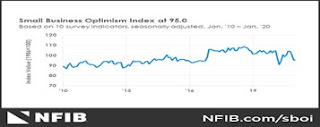The Mortgage Corner
The Calculated Risk/FRED graph shows that new-home sales are approaching the 2000 level at the start of the last housing bubble that ultimately resulted in the Great Recession (blue bars are recessions). But that doesn’t mean we are at the beginning of another housing bubble.
New home sales for January were reported at 923,000 on a seasonally adjusted annual rate basis (SAAR), said US Census Bureau, resulting in the decline to just 4.0 months of supply remaining for sale. That and still record low interest rates are boosting prices. But there is no bubble forming because there is not enough supply to satisfy current demand. Sales for the previous three months were revised up, also.
Existing-home sales are soaring this early in the year as well because last year’s selling season had a delayed fall start due to the pandemic, according to the National Association of Realtors (NAR). We can expect this surge to also continue because of ongoing demand.
Total existing-home sales, https://www.nar.realtor/existing-home-sales, completed transactions that include single-family homes, townhomes, condominiums and co-ops, increased 0.6 percent from December to a seasonally-adjusted annual rate of 6.69 million in January. Sales in total climbed year-over-year, up 23.7 percent from a year ago (5.41 million in January 2020).
Demand is so hot that the median existing-home sales price rose to $303,900, 14.1 percent higher from one year ago. And as of the end of January, existing-home inventory fell to a record-low of 1.04 million units, down by 25.7 percent year-over-year – a record decline.
"Home sales continue to ascend in the first month of the year, as buyers quickly snatched up virtually every new listing coming on the market," said NAR chief economist Lawrence Yun. "Sales easily could have been even 20% higher if there had been more inventory and more choices."
Residential construction is pushing hard to catch up to demand, as I said last week. Privately-owned housing starts in December were at a huge seasonally adjusted annual rate of 1,669,000, said the Census Bureau. This is 5.8 percent above the revised November estimate of 1,578,000 and is 5.2 percent above the December 2019 rate of 1,587,000.
Home sales are repeating their traditional role as a leading indicator with economic growth predicted to surge this year. Economists are now predicting a ‘V’ shaped recovery with Deutsche Bank increasing its GDP growth forecasts for 2021 and 2022, assuming the final fiscal aid package will be worth $1.6 trillion to $1.7 trillion, reports Reuters. “Their inflation numbers pushed a bit higher too with risks on the upside,” wrote Jim Reid, a strategist at the bank.
Reuters also reports Pimco, one of the world’s largest fixed income managers, said in a research note that the additional stimulus could “contribute to 2021 real GDP growth of over 7%,” a level not seen since “the great inflationary episode of the 1970s-1980s.”
Chief economist Yun expects more jobs to return in his press release, which will spur home buying in the coming months. He predicts existing-home sales will reach at least 6.5 million in 2021, even as he says mortgage rates are likely to inch higher due to the rising budget deficit and higher inflation.
But interest rates are still at recession lows, with the 30-year conforming fixed interest rate currently 2.75 percent with one origination point for the best credit holders.
With housing inventory at the end of January down 25.7 percent from one year ago, the unsold existing-home inventory sits at a record 1.9-month supply at the current sales pace, down from the 3.1-month amount recorded in January 2020.
All this news means the housing revival will continue. What better sign is there of a consumer spending revival this year?
Harlan Green © 2021
Follow Harlan Green on Twitter: https://twitter.com/HarlanGreen











